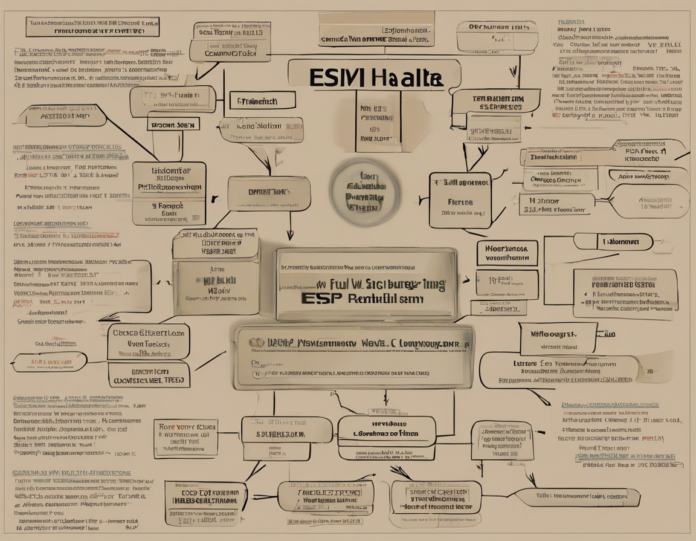In today’s digital age, the amount of electronic data produced and stored by individuals, businesses, and organizations is staggering. Emails, documents, spreadsheets, photos, videos, social media posts – you name it, it’s all digital and it’s all discoverable. Electronic discovery, also known as e-discovery, has become a critical component of the litigation process. One of the key elements of e-discovery is Electronically Stored Information (ESI).
What is ESI?
ESI stands for Electronically Stored Information. It refers to any data that is stored in an electronic format, including emails, documents, databases, voicemails, audio and video files, social media, and other types of digital information.
Types of ESI
ESI comes in various forms, and it is essential to understand the different types to effectively manage and disclose them in legal proceedings:
- Emails: One of the most common forms of ESI, emails can contain crucial evidence in legal cases.
- Documents: This includes word processing files, PDFs, spreadsheets, presentations, and more.
- Databases: Information stored in databases, such as customer records or financial data, falls under this category.
- Voicemails: Recorded voice messages are also considered ESI.
- Audio and Video Files: Recordings, webinars, video conferences, etc., are all forms of ESI.
- Social Media: Posts, messages, images, and videos shared on social media platforms are now commonly used as evidence.
The Importance of ESI in Litigation
ESI has transformed the way legal cases are handled. Here are some reasons why ESI is crucial in litigation:
- Comprehensive Evidence: ESI provides a more comprehensive view of a case, as it includes various types of electronic data that may be crucial for building a strong legal strategy.
- Efficiency: Managing electronic data is more efficient than sifting through paper documents, saving time and resources.
- Accuracy: ESI can be searched and analyzed using advanced software tools, increasing the accuracy of the discovery process.
- Admissibility: Courts now expect parties to produce ESI as part of the discovery process, and failure to do so can lead to sanctions.
Challenges of ESI
While ESI offers numerous benefits, it also presents challenges that need to be addressed:
- Volume: The sheer volume of ESI generated by individuals and organizations can be overwhelming, making it challenging to identify relevant information.
- Complexity: Different types and formats of ESI require specialized tools and expertise to manage and analyze effectively.
- Security: Protecting the confidentiality and integrity of ESI is crucial to prevent data breaches and unauthorized access.
- Cost: Managing ESI, especially in large cases, can be costly due to the need for specialized software, storage solutions, and expert support.
Best Practices for Managing ESI
To effectively manage ESI in litigation, consider the following best practices:
- Early Planning: Start thinking about ESI preservation and collection as soon as litigation is reasonably anticipated.
- Identify Key Custodians: Determine who within an organization is most likely to have relevant ESI and ensure their data is preserved.
- Use ESI Protocols: Develop protocols for collecting, processing, reviewing, and producing ESI to ensure consistency and compliance.
- Employ Technology: Utilize e-discovery software and tools to streamline the process of identifying and analyzing ESI.
- Work with Experts: Consider partnering with e-discovery experts who can provide guidance on managing ESI effectively.
Frequently Asked Questions (FAQs)
-
What is the role of metadata in ESI?
Metadata is data about data that provides information about when a file was created, accessed, modified, etc. It plays a crucial role in establishing the authenticity and integrity of ESI. -
How long should ESI be retained for legal purposes?
Retention periods for ESI may vary based on legal requirements and industry standards. It is advisable to have a retention policy in place to determine how long different types of ESI should be retained. -
Can deleted ESI be recovered for litigation?
In some cases, deleted ESI can be recovered using specialized software tools. However, the process can be complex and may require the assistance of forensic experts. -
What are the potential consequences of failing to produce ESI in litigation?
Failure to produce ESI as required by the court can result in sanctions, adverse inferences, cost-shifting, or even case dismissal. It is crucial to comply with e-discovery rules and obligations. -
How can encryption impact the discovery of ESI?
Encryption can pose challenges during the discovery process as it may impede access to ESI. Parties may need to work together to decrypt encrypted data or seek court intervention to resolve such issues.
In conclusion, ESI has become a fundamental aspect of modern litigation, enabling parties to access a wide range of electronic data that can significantly impact the outcome of a case. By understanding the types of ESI, its importance, challenges, best practices, and addressing common questions surrounding ESI, legal professionals can navigate the complexities of e-discovery more effectively and leverage electronic information to their advantage.
